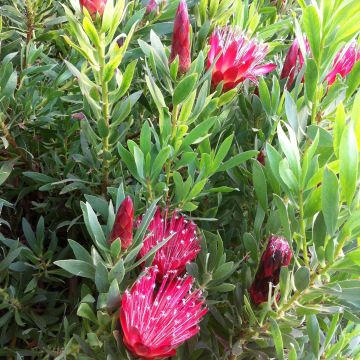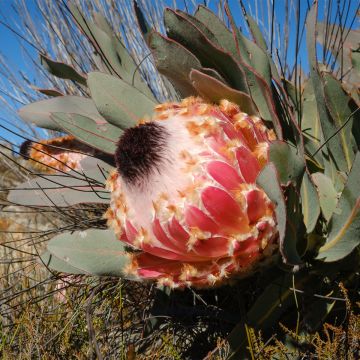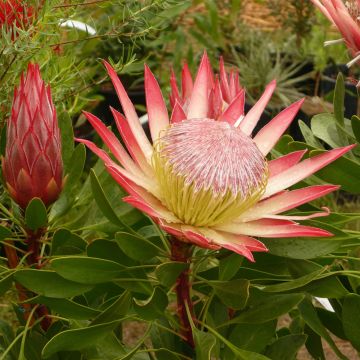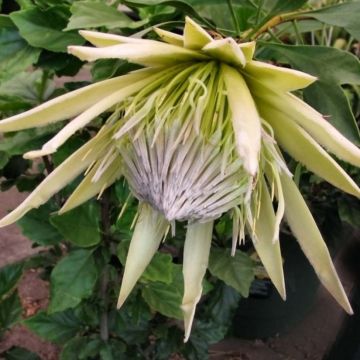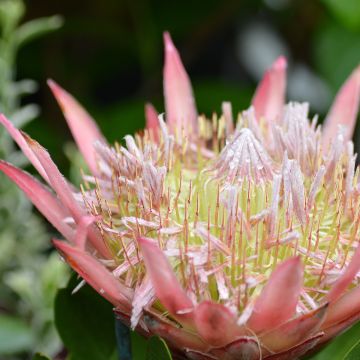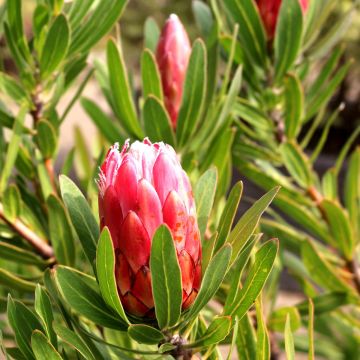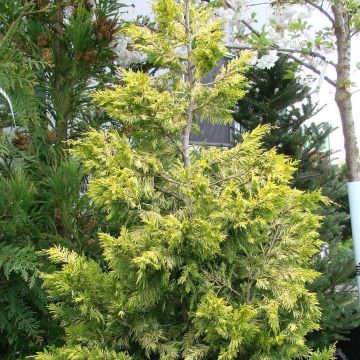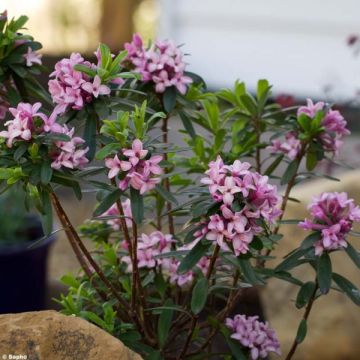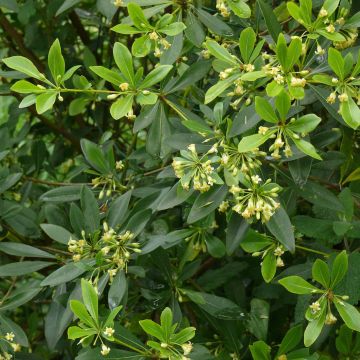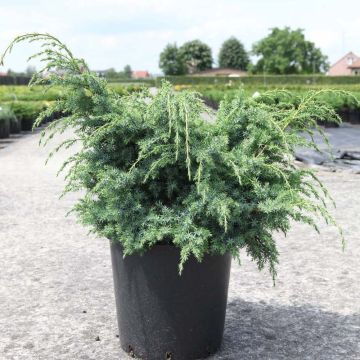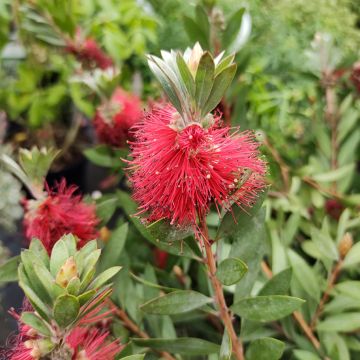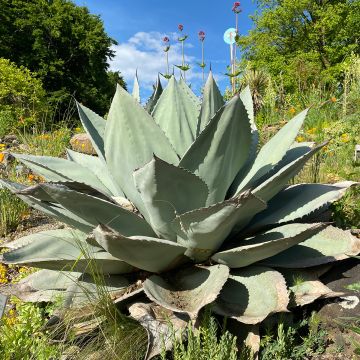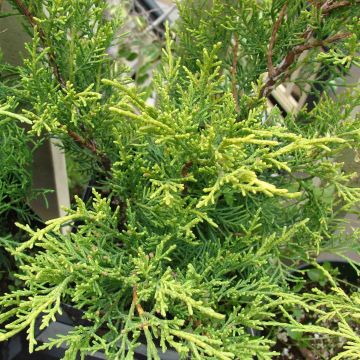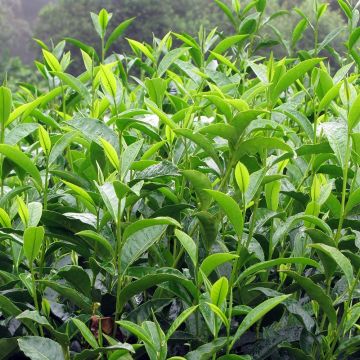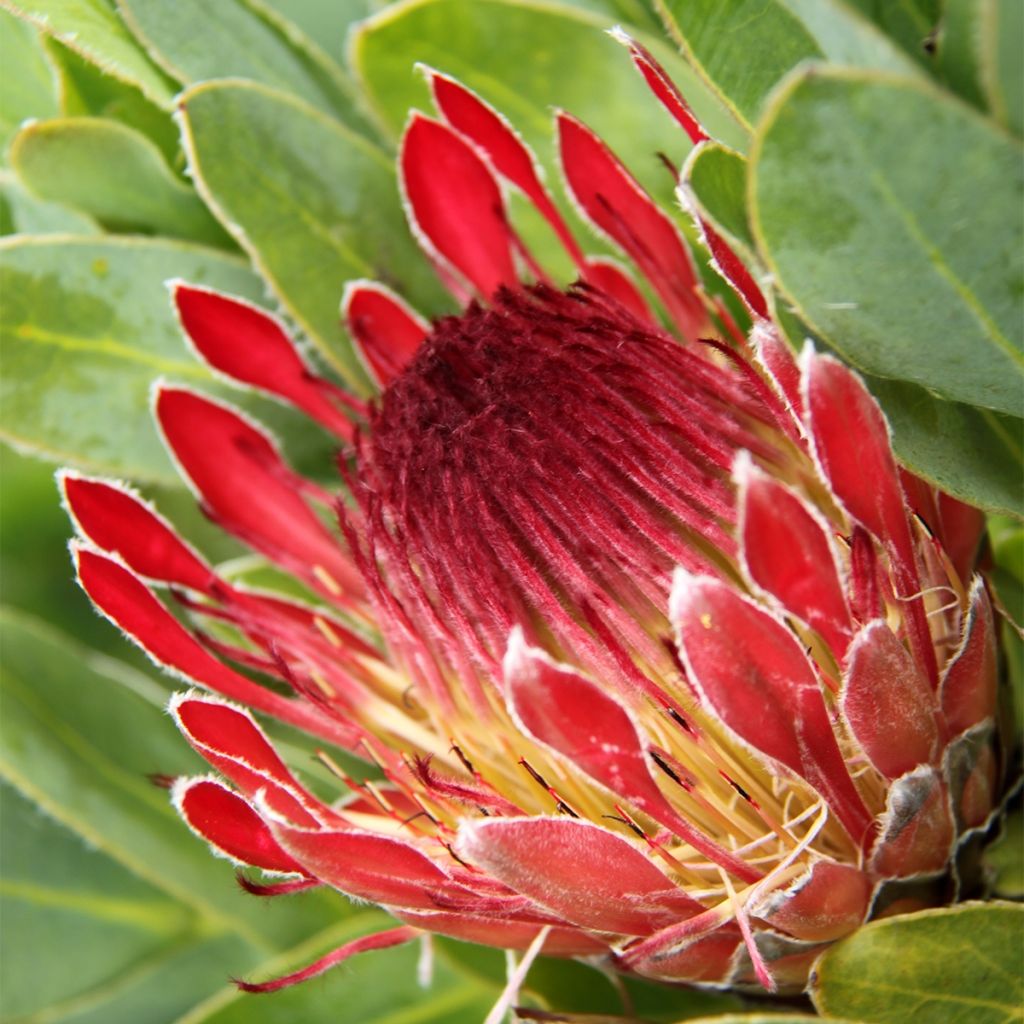

Protea eximia - Protée à feuilles larges
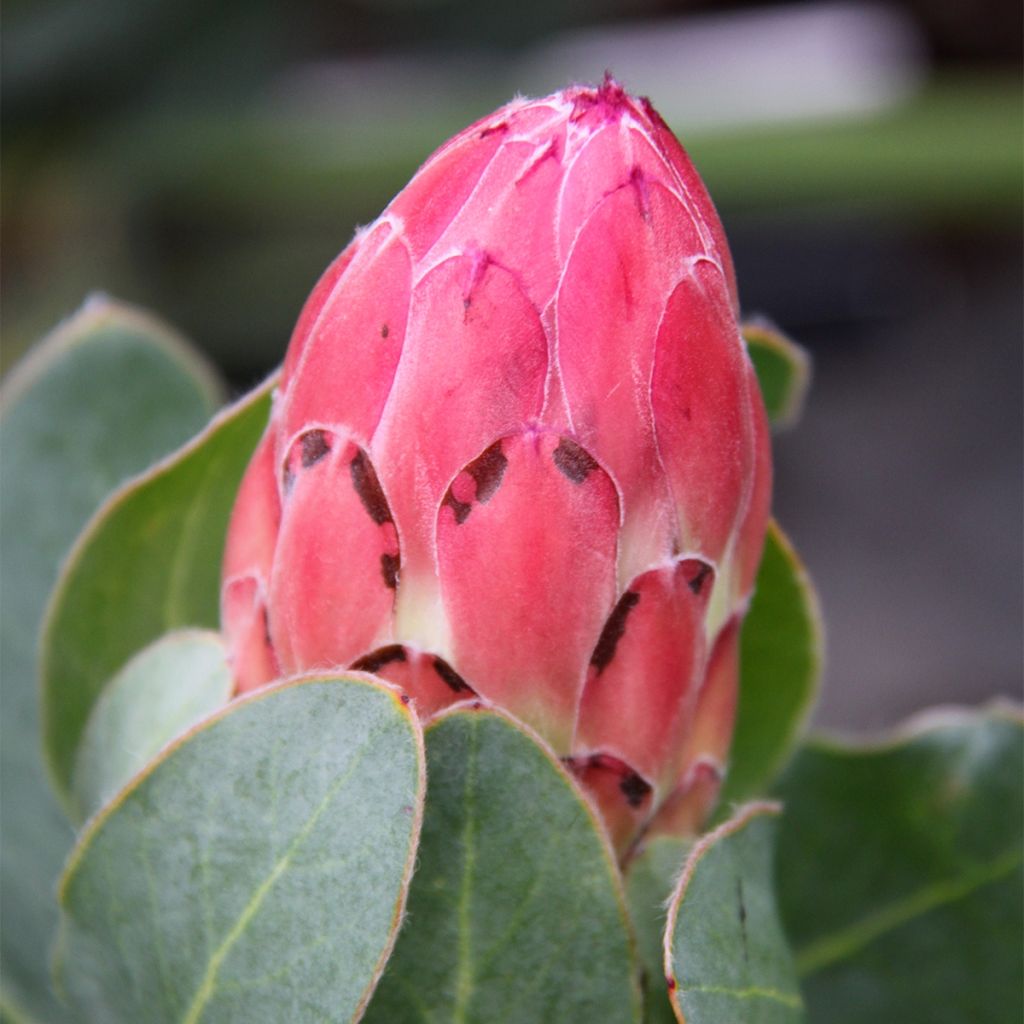

Protea eximia - Protée à feuilles larges
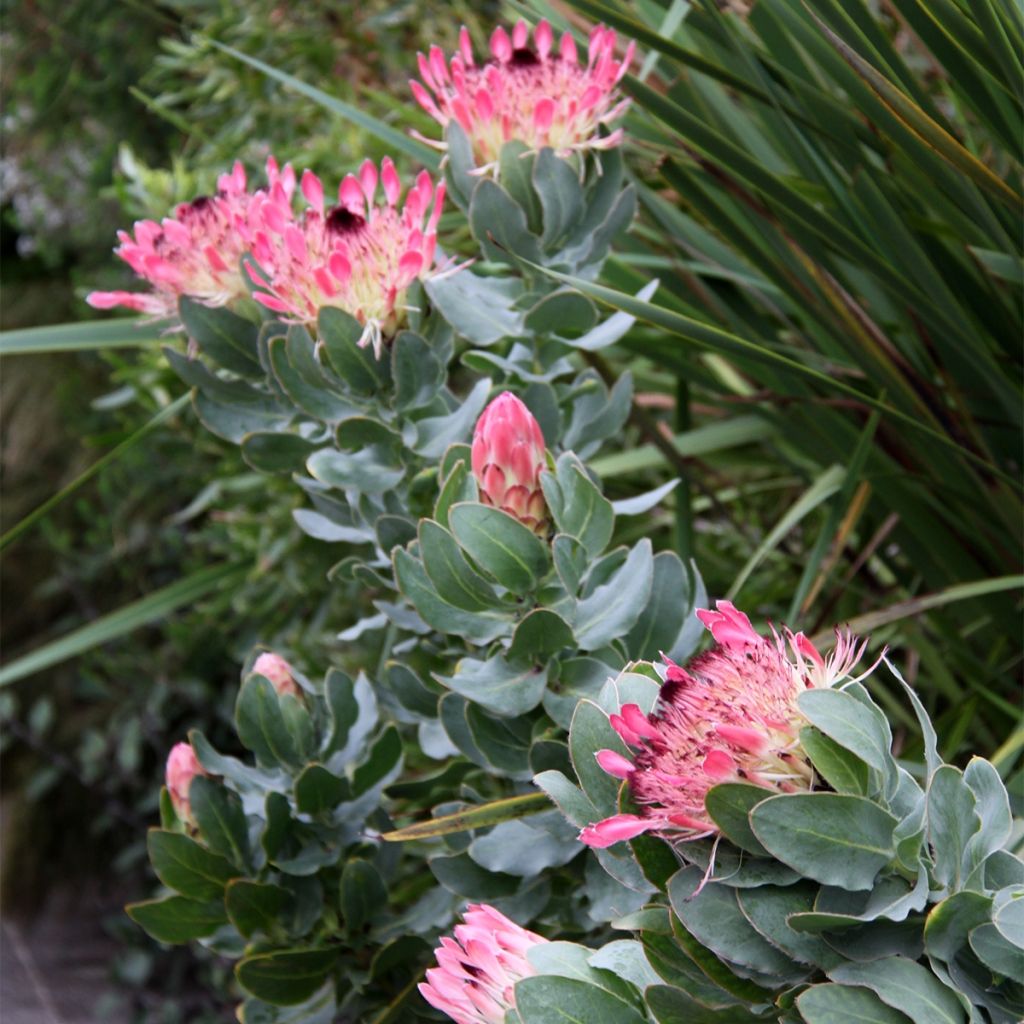

Protea eximia - Protée à feuilles larges
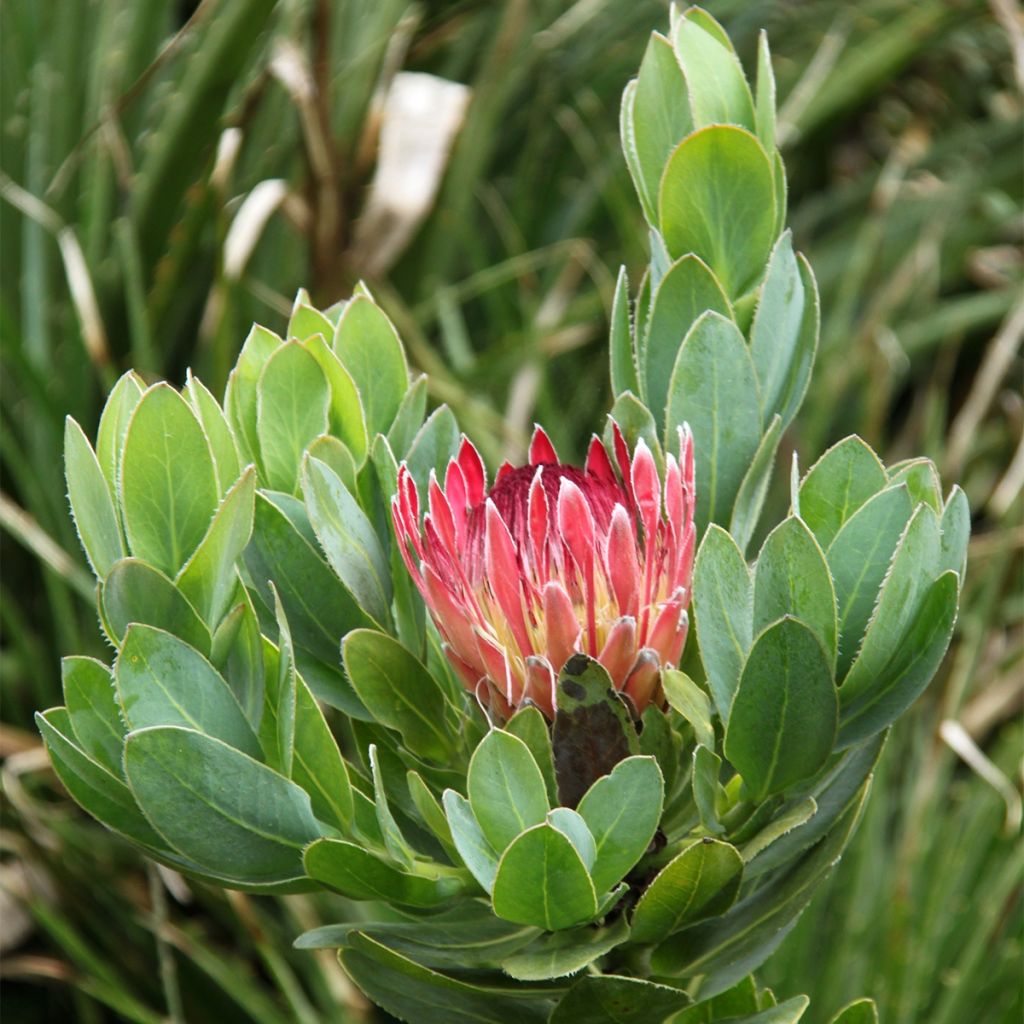

Protea eximia - Protée à feuilles larges
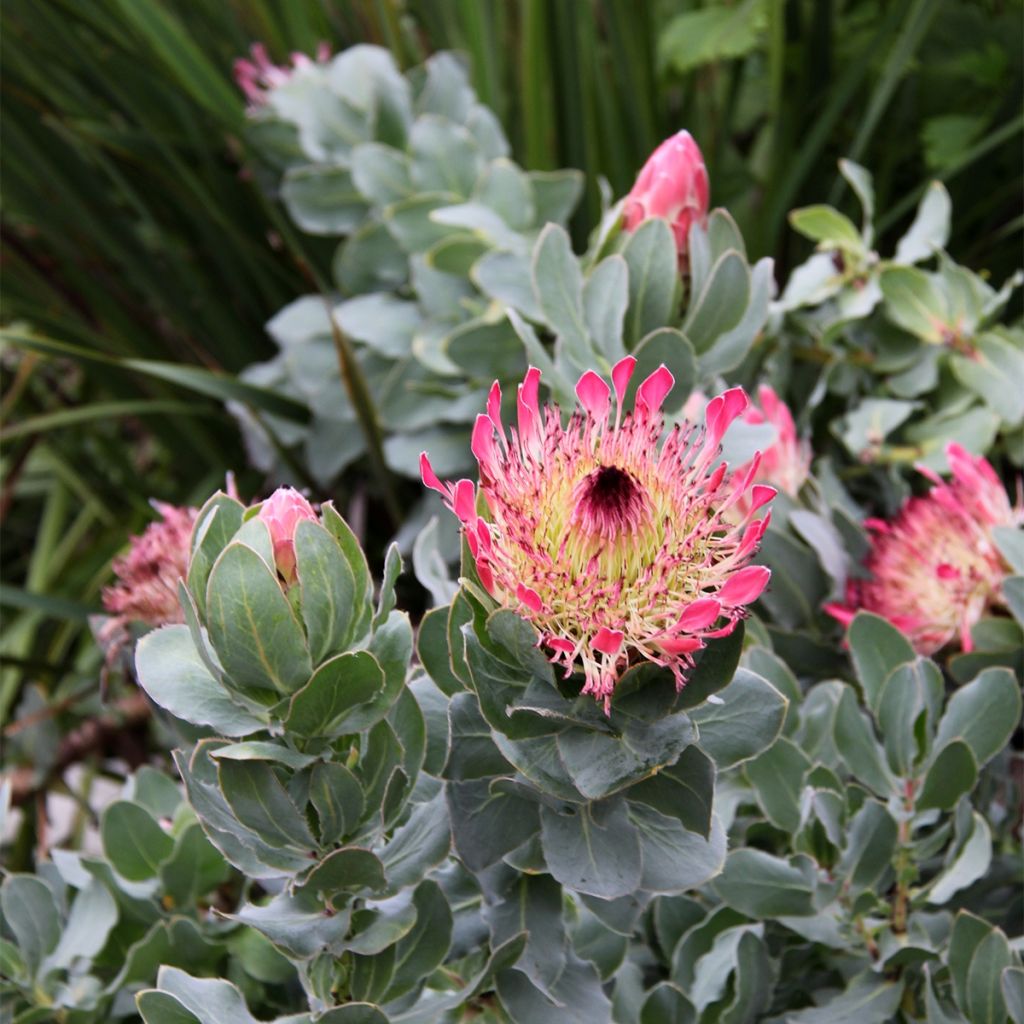

Protea eximia - Protée à feuilles larges
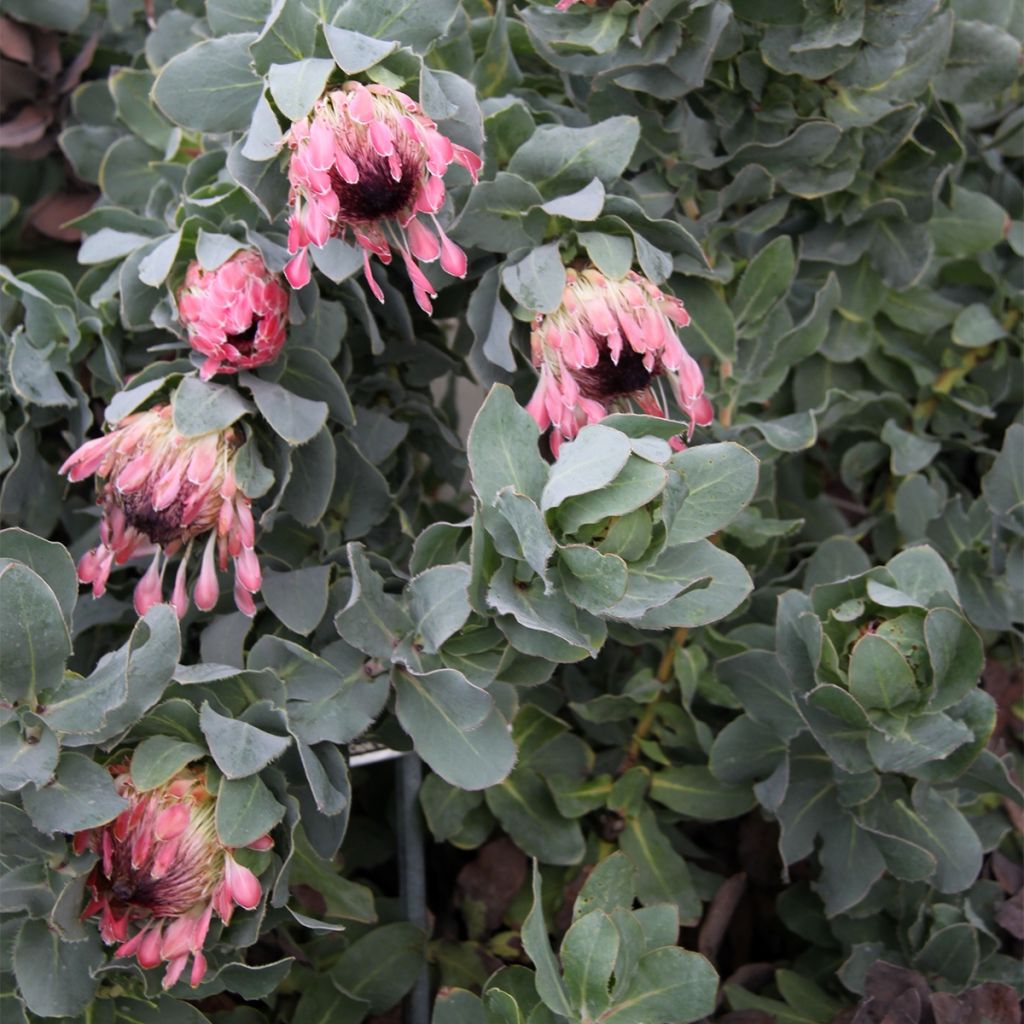

Protea eximia - Protée à feuilles larges
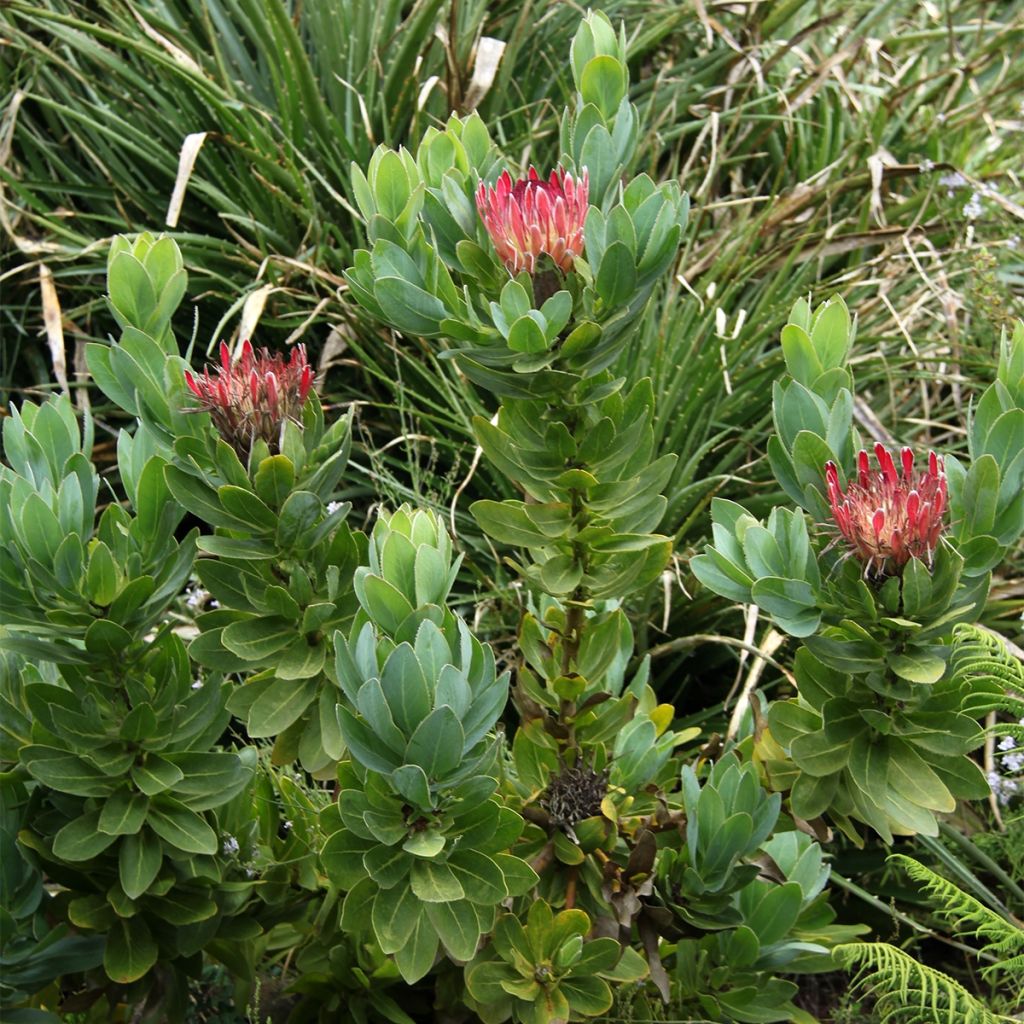

Protea eximia - Protée à feuilles larges
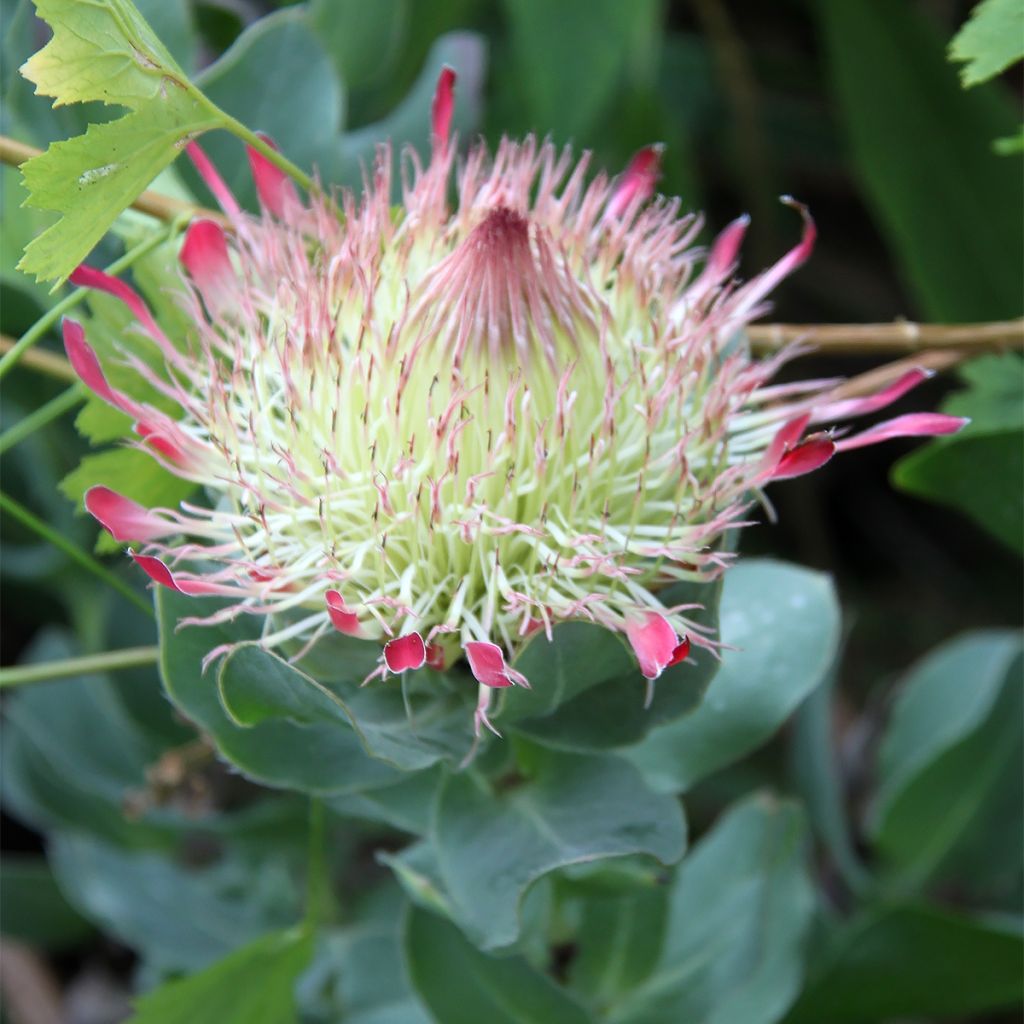

Protea eximia - Protée à feuilles larges
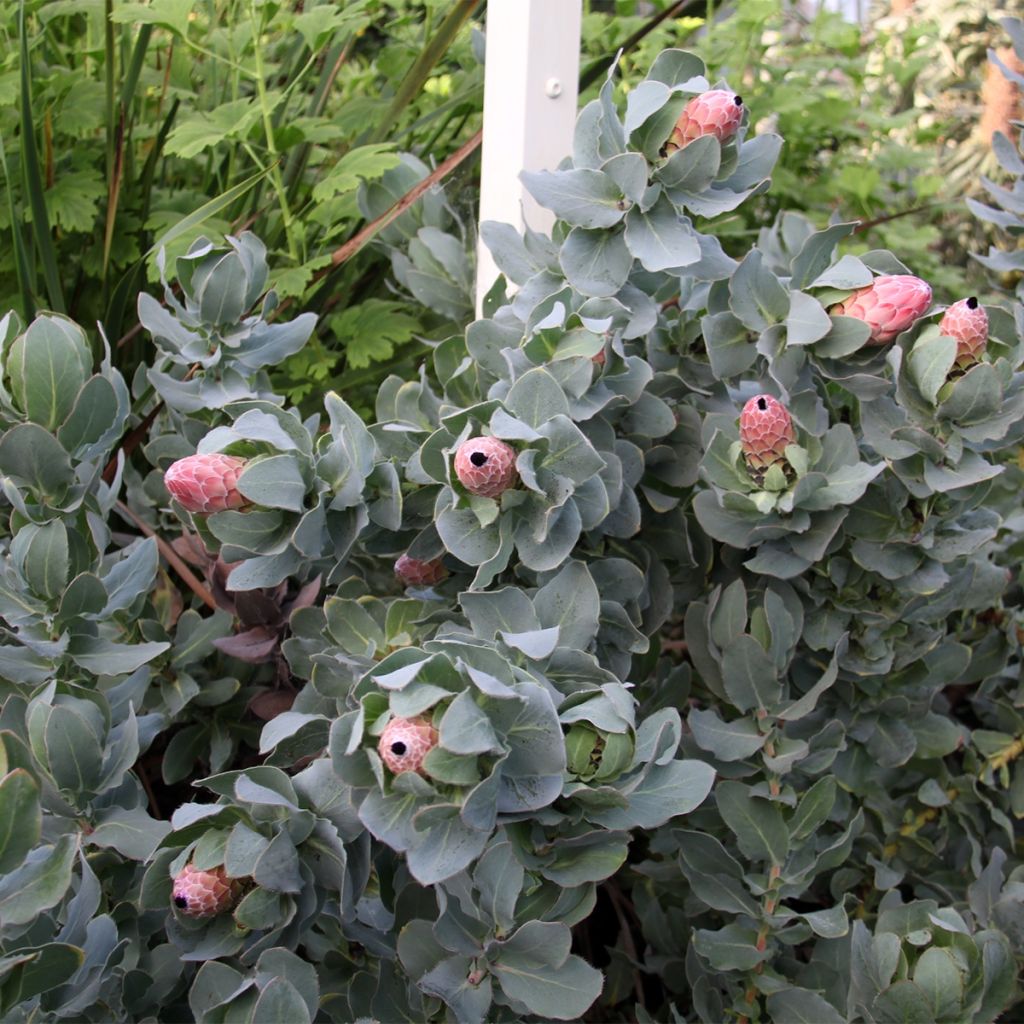

Protea eximia - Protée à feuilles larges
Protea eximia
Protea eximia
Broad-leaved Sugarbush
This item cannot be shipped to the selected country
Delivery charge from €5.90
More information
Schedule delivery date,
and select date in basket
This plant carries a 24 months recovery warranty
More information
We guarantee the quality of our plants for a full growing cycle, and will replace at our expense any plant that fails to recover under normal climatic and planting conditions.
From €5.90 for pickup delivery and €6.90 for home delivery
Express home delivery from €8.90.
Does this plant fit my garden?
Set up your Plantfit profile →
Description
Protea eximia is a remarkable shrubby protea that flowers in the mountains of South Africa, up to 1500 m (4921ft) in altitude. This botanical species is a little hardier than its cousins from the plains, and especially less demanding in terms of climate, which allows it to be more easily acclimatized in coastal gardens, planted in a non-calcareous and very sunny rockery. This protea is characterized by large, thick, and pruinose leaves, varying in colour from bluish to reddish, and very beautiful bracteate flowers surrounding a purple heart. Cultivation in large pots is however preferable, not only to control the composition of the growing medium, but also because it is essential to store the young plants as soon as the first frost occurs.
Protea eximia, formerly known as Protea latifolia, is commonly called broad-leaved protea or duchess protea. This endemic species to the Cape Province is found in all the South African coastal mountains, from Worcester in the west to Port Elizabeth in the east. In nature, it is a large shrub that grows in vast colonies, occupying varied habitats in terms of altitude and climate. When in bloom, the large stands of Protea eximia offer a breathtaking spectacle. This protea has great adaptability, allowing it to bloom in the ground even in gardens in Cornwall, at the southernmost point of England. All proteas are perennial shrubs in the family Proteaceae, native to the Cape region of South Africa. Strange in every way, they often require fire to germinate their seeds.
Protea eximia is a slow-growing shrub, sparsely branched, with a fairly dense upright habit. In the ground, in our latitudes, the plant reaches 2 m (7ft) in height and 1.50 m (5ft) in width. The stems bear thick and flattened leaves, measuring 6 to 10 cm (2 to 4in) in length and 3 to 6.5 cm (1 to 3in) in width, oval to elongated oval-shaped, heart-shaped at the base. Their lamina is leathery, covered with a whitish bloom that gives them a glaucous, bluish colour. The foliage may sometimes take on a reddish-pink hue. In our climates, flowering generally occurs in spring, or even in summer, with not all plants necessarily flowering at the same time. The flowers appear at the top of the stems. They are wide inflorescences, 10 to 14 cm (4 to 6in) long, in the shape of an inverted cone. Each one has 5 to 6 rows of thin bracts at the base, spatulate at the tip. These highly decorative bracts are silky on the outside, but brightly coloured from pink to red on the inside. The center of each inflorescence is occupied by a multitude of long flowers with a yellowish base and light crimson colouring at the tip. The flowering of proteas attracts numerous pollinating insects and gives way to some seeds almost as large as walnuts, velvety. The thick roots of this plant also serve as a storage organ. In case of fire, the protea is capable of regenerating itself from its roots, nourished by its own ashes.
Proteas are plants that are not very hardy, strange and fascinating, but the Protea eximia, if we are to believe enthusiasts of these sometimes capricious plants, is one of the easiest to cultivate. Florists, as well as gardeners, appreciate the longevity of its often oversized flower, adorned with refined colours. It will thrive in coastal gardens spared from heavy frosts, in light, poor, acidic to neutral soil. It will look good when planted individually on large slopes or in a large rockery, always in an open position, in full sun. In an exotic garden, it can be associated with Canary or Madeira viper's bugloss, Puya, Euphorbia mellifera, Leucadendron, etc.
An original root system, adapted to poor and dry soils:
Plants that grow in nutrient-poor soils often form a symbiosis with soil fungi that promote the absorption of water and nutrients. However, proteas have chosen a different strategy; they develop a large quantity of special lateral roots along their roots. These roots are called proteoids and are induced by rain, developing under the layer of dead leaves that cover the base of the plant. Rain promotes the decomposition of leaves, resulting in the release of nutrients. These ephemeral roots generally dry up at the end of the growth period. They have twice the water and nutrient absorption activity of "normal" roots.
Report an error about the product description
Protea eximia in pictures
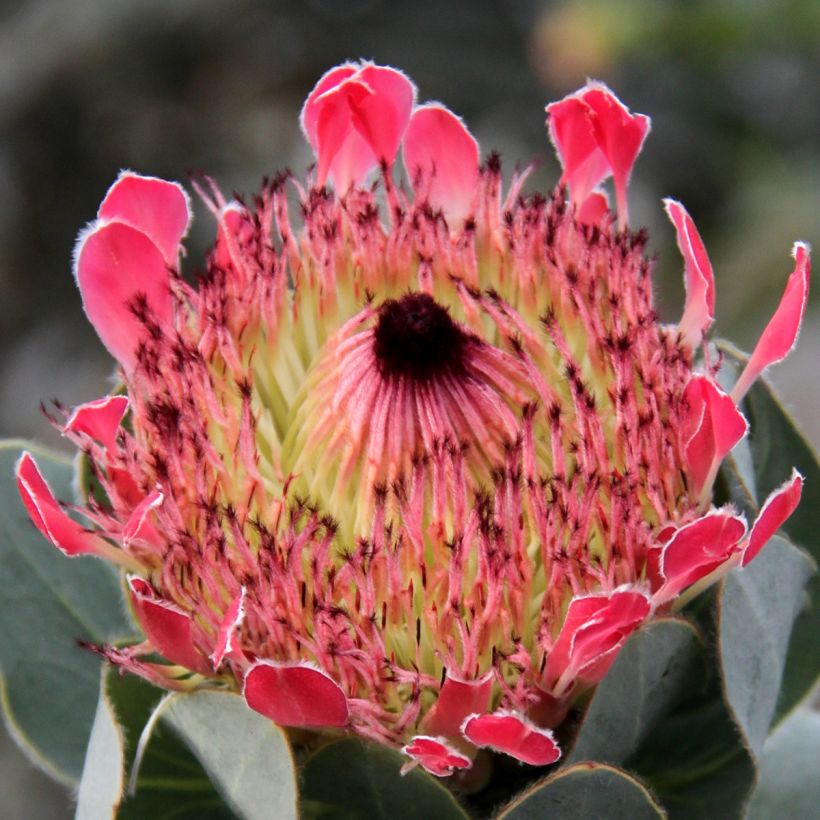

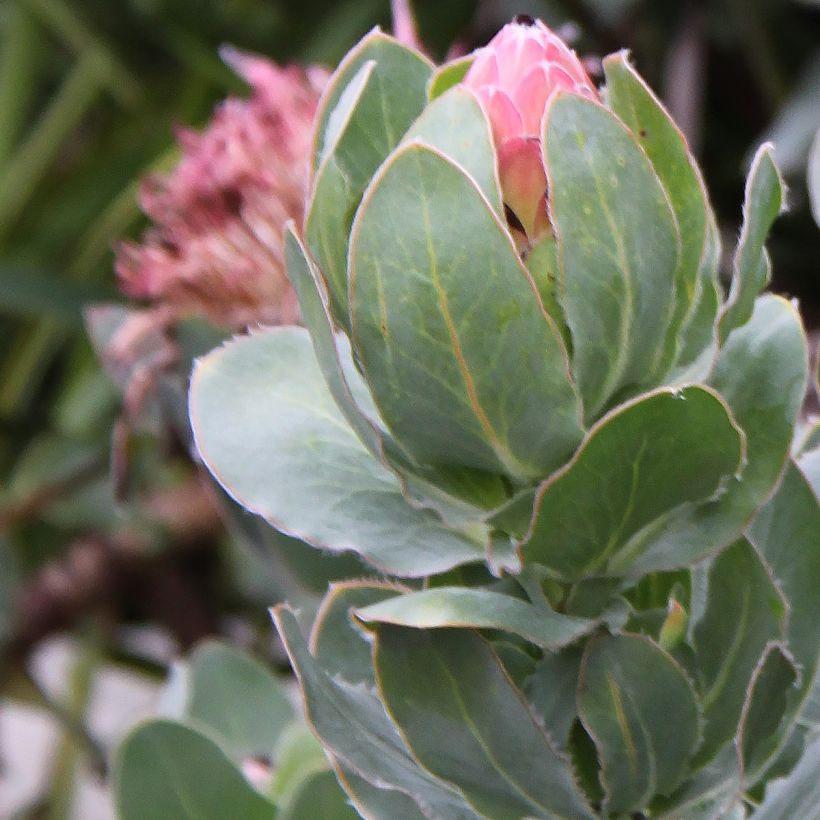

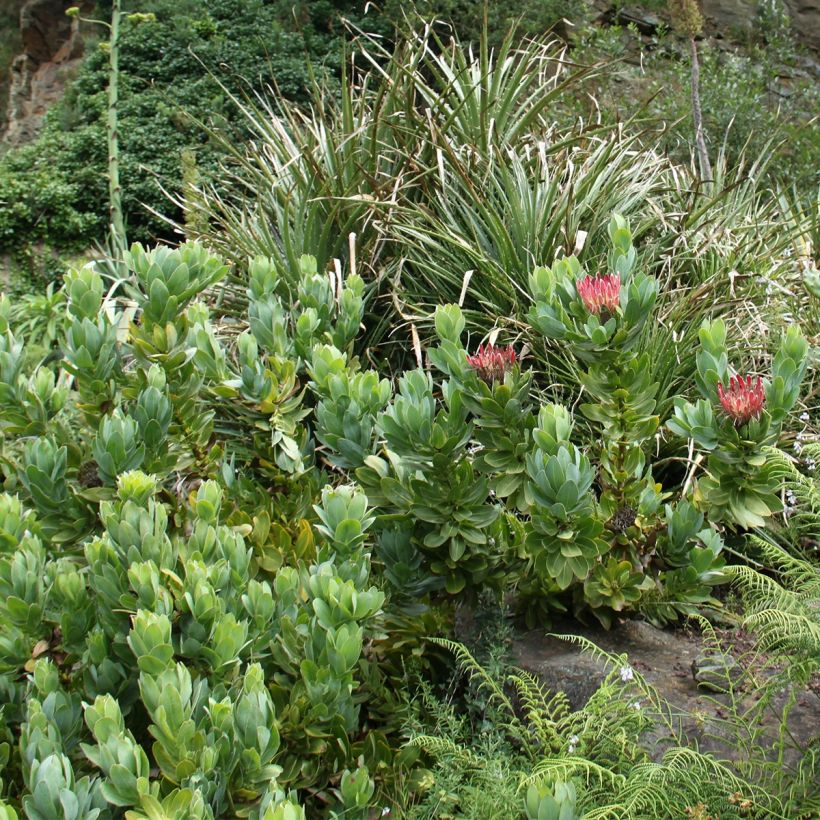

Plant habit
Flowering
Foliage
Botanical data
Protea
eximia
Proteaceae
Broad-leaved Sugarbush
South Africa
Other Protea
Planting and care
Plant the protea eximia preferably in spring, or in autumn in very mild climates, in a very sunny and sheltered location. This plant requires a light, well-drained, poor, mineral soil with a slightly acidic or neutral (6.5<pH<7.5) pH. A mix of leaf compost, a little heath soil or crushed pine bark, and coarse river sand or perlite seems suitable. Proteas are sensitive to excess phosphates and nitrates, so it is necessary to avoid giving too much fertilizer, or even not giving any at all. A small amount of dried blood applied to the base of the plant in spring is usually sufficient. While mature plants can tolerate occasional frosts down to around -6°C (21.2°F) in dry soil, young proteas should be protected from frost during their first few years, either in a frost-free area in cooler climates or under a winter cover in regions with mild winters. This plant flowers after approximately 4 to 5 years of cultivation from sowing. For indoor cultivation, it is important to ensure good ventilation in the room and to avoid watering with hard water (there are mineral waters or low calcium content spring waters that will work very well, compare the labels).
Planting period
Intended location
Care
This item has not been reviewed yet - be the first to leave a review about it.
Evergreen shrubs
Haven't found what you were looking for?
Hardiness is the lowest winter temperature a plant can endure without suffering serious damage or even dying. However, hardiness is affected by location (a sheltered area, such as a patio), protection (winter cover) and soil type (hardiness is improved by well-drained soil).

Photo Sharing Terms & Conditions
In order to encourage gardeners to interact and share their experiences, Promesse de fleurs offers various media enabling content to be uploaded onto its Site - in particular via the ‘Photo sharing’ module.
The User agrees to refrain from:
- Posting any content that is illegal, prejudicial, insulting, racist, inciteful to hatred, revisionist, contrary to public decency, that infringes on privacy or on the privacy rights of third parties, in particular the publicity rights of persons and goods, intellectual property rights, or the right to privacy.
- Submitting content on behalf of a third party;
- Impersonate the identity of a third party and/or publish any personal information about a third party;
In general, the User undertakes to refrain from any unethical behaviour.
All Content (in particular text, comments, files, images, photos, videos, creative works, etc.), which may be subject to property or intellectual property rights, image or other private rights, shall remain the property of the User, subject to the limited rights granted by the terms of the licence granted by Promesse de fleurs as stated below. Users are at liberty to publish or not to publish such Content on the Site, notably via the ‘Photo Sharing’ facility, and accept that this Content shall be made public and freely accessible, notably on the Internet.
Users further acknowledge, undertake to have ,and guarantee that they hold all necessary rights and permissions to publish such material on the Site, in particular with regard to the legislation in force pertaining to any privacy, property, intellectual property, image, or contractual rights, or rights of any other nature. By publishing such Content on the Site, Users acknowledge accepting full liability as publishers of the Content within the meaning of the law, and grant Promesse de fleurs, free of charge, an inclusive, worldwide licence for the said Content for the entire duration of its publication, including all reproduction, representation, up/downloading, displaying, performing, transmission, and storage rights.
Users also grant permission for their name to be linked to the Content and accept that this link may not always be made available.
By engaging in posting material, Users consent to their Content becoming automatically accessible on the Internet, in particular on other sites and/or blogs and/or web pages of the Promesse de fleurs site, including in particular social pages and the Promesse de fleurs catalogue.
Users may secure the removal of entrusted content free of charge by issuing a simple request via our contact form.
The flowering period indicated on our website applies to countries and regions located in USDA zone 8 (France, the United Kingdom, Ireland, the Netherlands, etc.)
It will vary according to where you live:
- In zones 9 to 10 (Italy, Spain, Greece, etc.), flowering will occur about 2 to 4 weeks earlier.
- In zones 6 to 7 (Germany, Poland, Slovenia, and lower mountainous regions), flowering will be delayed by 2 to 3 weeks.
- In zone 5 (Central Europe, Scandinavia), blooming will be delayed by 3 to 5 weeks.
In temperate climates, pruning of spring-flowering shrubs (forsythia, spireas, etc.) should be done just after flowering.
Pruning of summer-flowering shrubs (Indian Lilac, Perovskia, etc.) can be done in winter or spring.
In cold regions as well as with frost-sensitive plants, avoid pruning too early when severe frosts may still occur.
The planting period indicated on our website applies to countries and regions located in USDA zone 8 (France, United Kingdom, Ireland, Netherlands).
It will vary according to where you live:
- In Mediterranean zones (Marseille, Madrid, Milan, etc.), autumn and winter are the best planting periods.
- In continental zones (Strasbourg, Munich, Vienna, etc.), delay planting by 2 to 3 weeks in spring and bring it forward by 2 to 4 weeks in autumn.
- In mountainous regions (the Alps, Pyrenees, Carpathians, etc.), it is best to plant in late spring (May-June) or late summer (August-September).
The harvesting period indicated on our website applies to countries and regions in USDA zone 8 (France, England, Ireland, the Netherlands).
In colder areas (Scandinavia, Poland, Austria...) fruit and vegetable harvests are likely to be delayed by 3-4 weeks.
In warmer areas (Italy, Spain, Greece, etc.), harvesting will probably take place earlier, depending on weather conditions.
The sowing periods indicated on our website apply to countries and regions within USDA Zone 8 (France, UK, Ireland, Netherlands).
In colder areas (Scandinavia, Poland, Austria...), delay any outdoor sowing by 3-4 weeks, or sow under glass.
In warmer climes (Italy, Spain, Greece, etc.), bring outdoor sowing forward by a few weeks.

































